Abstract
Intravenous injections of adrenaline, but not those of noradrenaline, caused the appearance of a substance which resembled isoprenaline in RF value and pharmacological activity in blood withdrawn from the lower abdominal aortae of chloralosed cats rested after acute adrenalectomy and induction of lasting block in autonomic ganglia with hexamethonium. The formation of the isoprenaline-like compound was prevented by pretreatment with pyrogallol but not by pretreatment with reserpine, cocaine, phentolamine, dibenamine, harmaline, or iproniazid. The liver proved a main site of the origin of this isoprenaline-like substance.
Full text
PDF
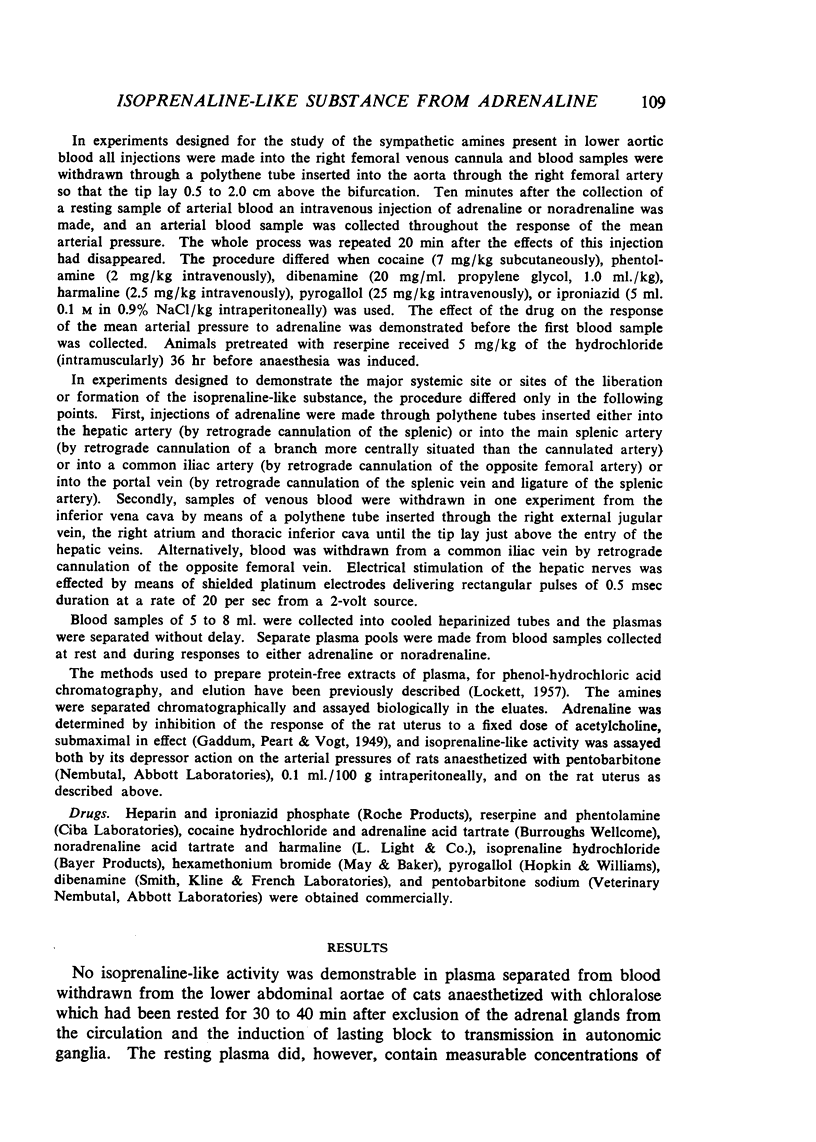
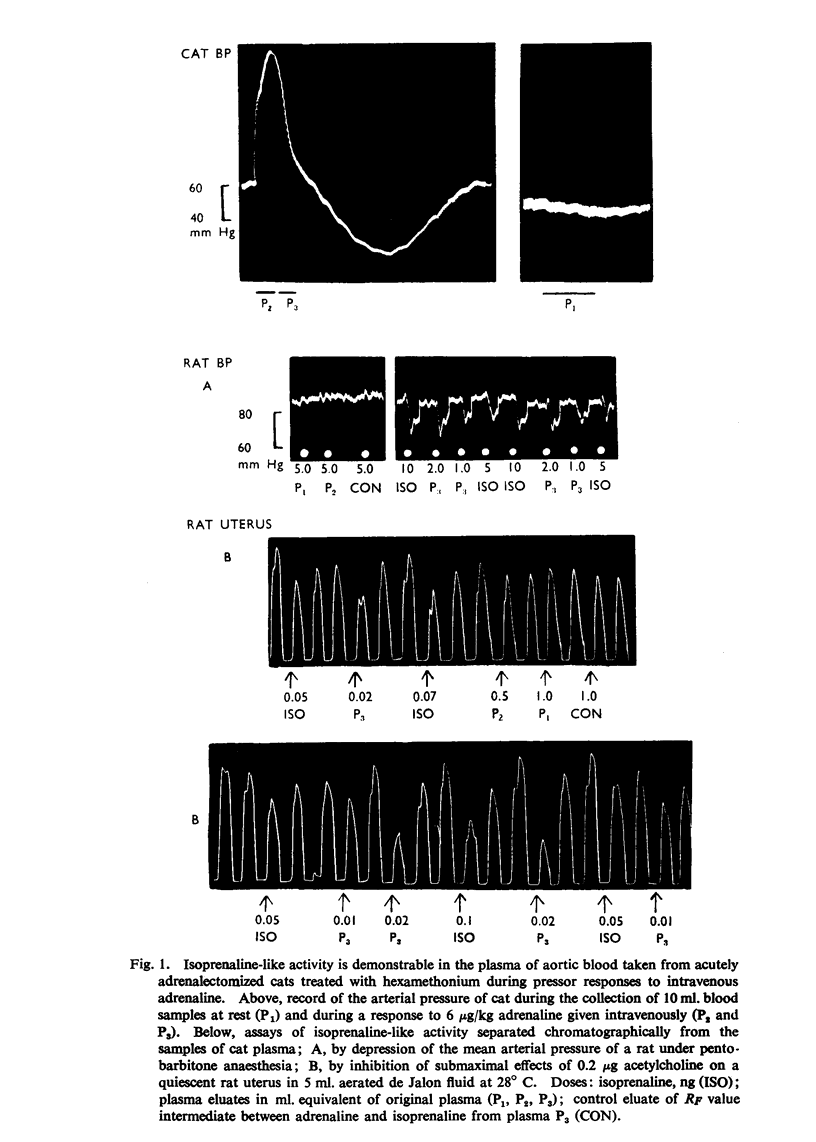

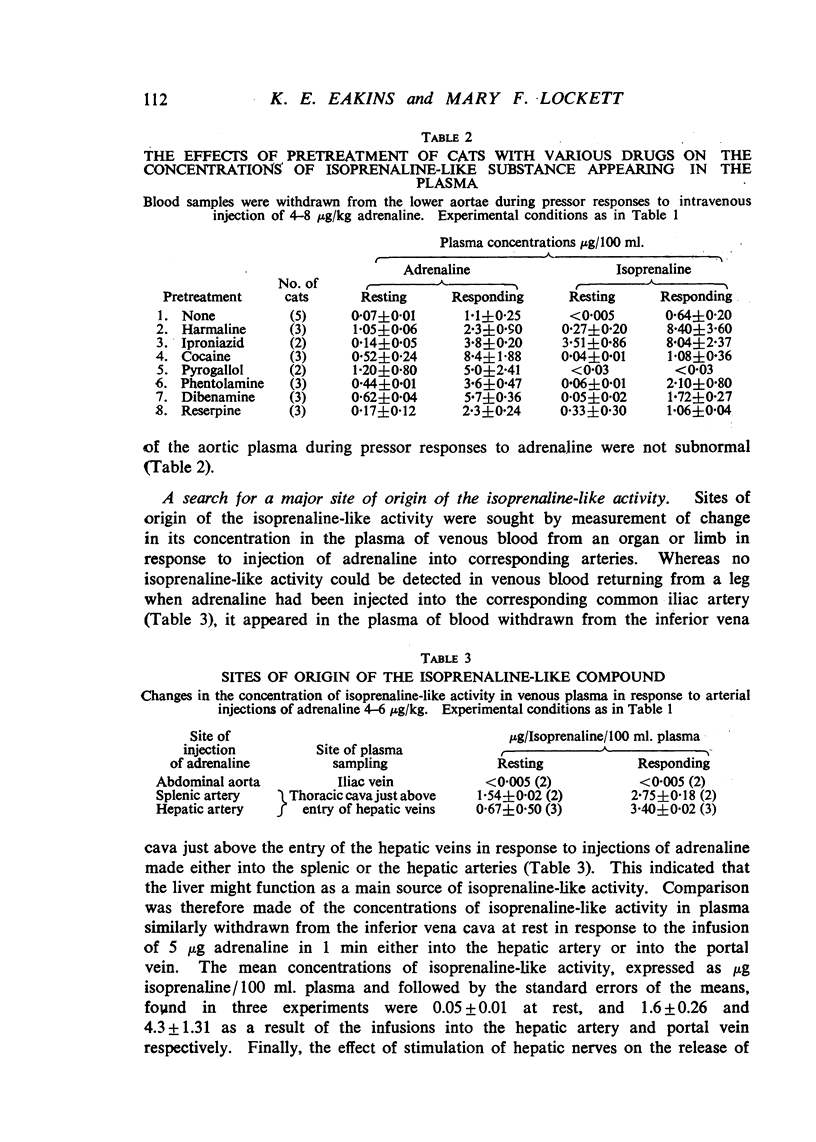
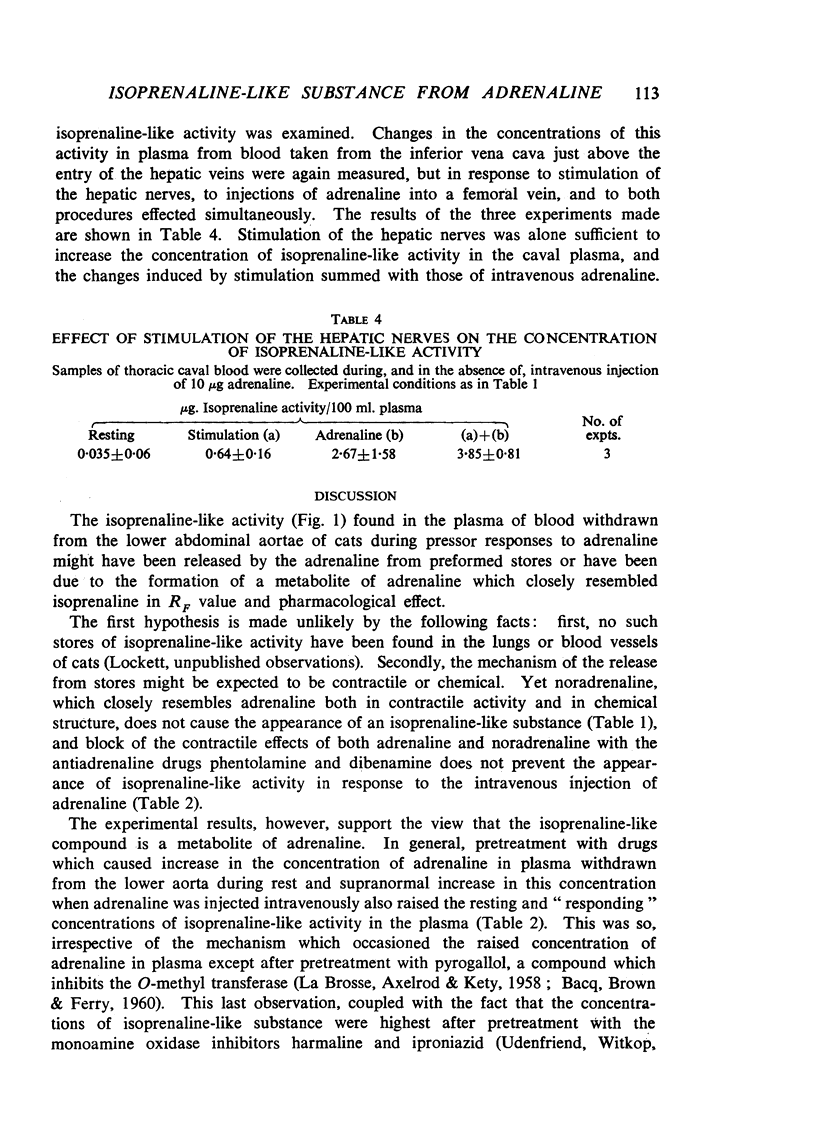
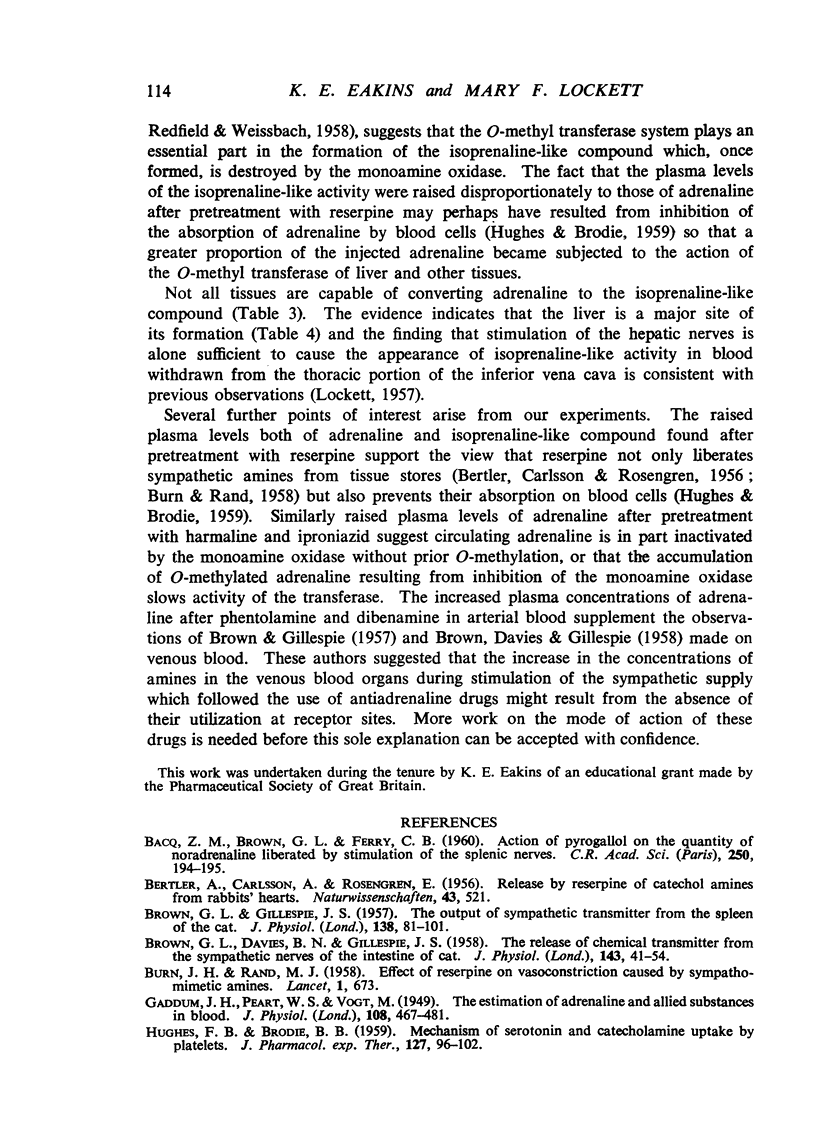
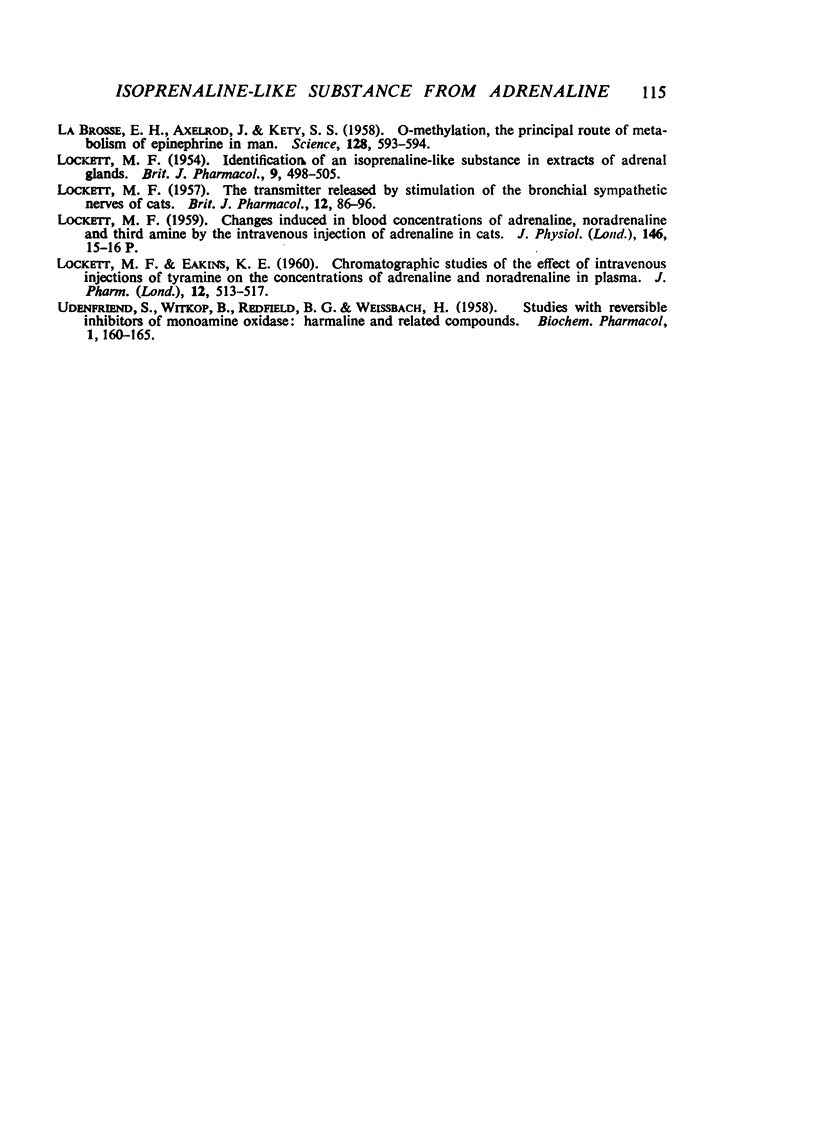
Selected References
These references are in PubMed. This may not be the complete list of references from this article.
- BACQ Z. M., BROWN G. L., FERRY C. B. [Action of pyrogallol on the quantity of noradrenalin liberated by the stimulation of the splenic nerves]. C R Hebd Seances Acad Sci. 1960 Jan 4;250:194–195. [PubMed] [Google Scholar]
- BROWN G. L., DAVIES B. N., GILLESPIE J. S. The release of chemical transmitter from the sympathetic nerves of the intestine of the cat. J Physiol. 1958 Aug 29;143(1):41–54. doi: 10.1113/jphysiol.1958.sp006042. [DOI] [PMC free article] [PubMed] [Google Scholar]
- BROWN G. L., GILLESPIE J. S. The output of sympathetic transmitter from the spleen of the cat. J Physiol. 1957 Aug 29;138(1):81–102. doi: 10.1113/jphysiol.1957.sp005839. [DOI] [PMC free article] [PubMed] [Google Scholar]
- BURN J. H., RAND M. J. Effect of reserpine vasoconstriction caused by sympathomimetic amines. Lancet. 1958 Mar 29;1(7022):673–673. doi: 10.1016/s0140-6736(58)91090-0. [DOI] [PubMed] [Google Scholar]
- Gaddum J. H., Peart W. S., Vogt M. The estimation of adrenaline and allied substances in blood. J Physiol. 1949 Jun 15;108(4):467–481. doi: 10.1113/jphysiol.1949.sp004350. [DOI] [PMC free article] [PubMed] [Google Scholar]
- HUGHES F. B., BRODIE B. B. The mechanism of serotonin and catecholamine uptake by platelets. J Pharmacol Exp Ther. 1959 Oct;127:96–102. [PubMed] [Google Scholar]
- LABROSSE E. H., AXELROD J., KETY S. S. O-Methylation, the principal route of metabolism of epinephrine in man. Science. 1958 Sep 12;128(3324):593–594. doi: 10.1126/science.128.3324.593. [DOI] [PubMed] [Google Scholar]
- LOCKETT M. F., EAKINS K. E. Chromatographic studies of the effect of intravenous injections of tyramine on the concentrations of adrenaline and noradrenaline in plasma. J Pharm Pharmacol. 1960 Sep;12:513–517. doi: 10.1111/j.2042-7158.1960.tb12702.x. [DOI] [PubMed] [Google Scholar]


